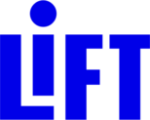LIFT is an organization focused on people. On hardworking low-income families – immigrant and native born, documented and undocumented – and on staff and volunteers that represent the communities we serve who are committed to social justice. As such, we feel a responsibility to raise up those voices. This ongoing blog series will work to highlight the thoughts, feelings and experiences of the many people from all walks of life that make up LIFT. In what has become an often divisive and turbulent time, we hope it provides some context about who we are, what we do and why we do it.
Today, one of the few points on which most agree is that income inequality in our nation is rising and far too many communities are being left behind. According to the Institute for Policy Studies, these growing gaps have a disproportionate impact on communities of color – and if current trends continue, the average household wealth divide between White and Latino and Black families will double from around $500,000 in 2013 to more than $1 million by 2043. Just as advantage begets advantage, so too does inherited disadvantage feed into a cycle that’s that much harder to interrupt, as we know well from our work at LIFT.
Working with LIFT members – 99 percent of whom identify as people of color – to address asset-poverty is one of the primary tenets of our program model. A snapshot of key pieces of this work follows:
- Skill building: LIFT’s focus on building financial capabilities helps level the playing field for our parents. By helping members build skills and access resources, we are helping to bridge the advantage gap, empowering low-income parents to make informed choices about how they spend, how they save and how they consume. As parents build skills and meet their goals, they grow in confidence and resilience, creating a positive feedback loop of increasingly greater and deeper gains.
- Resource navigation: By helping members access basic needs resources, LIFT helps buffers families from many of poverty’s ill effects, enabling members to focus both on career goals and the important – but non-urgent – activities that contribute to children’s development, like playing with and reading to their kids. The challenges our members face run a wide gamut: some are English language learners, others are undocumented or formerly incarcerated. We create a holistic, wraparound set of supports and build trusting relationships with members to help them lead their families to more stable ground.
- Building social capital: LIFT connects parents to a wide network of support that includes other parents, LIFT staff and members of the community. The reduced stress and increased hope that members experience are essential to their continuing progress.
- Building human and financial capital: LIFT’s innovative cash transfer program counters the “culture of poverty” myth that has harmed communities of color. Far from laying the burden for change on the shoulders of struggling families, we draw from behavioral science learnings to identify and alter the contextual and environmental features that can thwart even the best of intentions. With nearly two decades of experience working hand-in-hand with families, we know that people living in poverty CAN be trusted with money – and we understand that putting unnecessary restrictions on cash needlessly adds additional hurdles to members’ lives.
At LIFT, we understand that no single set of programming – no matter how robust – can fully address systemic inequities that persist across domains. Nonetheless, we’re confident that by investing in families and acting as a megaphone to celebrate their successes, we can shift the narrative on how communities living in poverty are perceived and arm the next generation to break the cycle of poverty.
